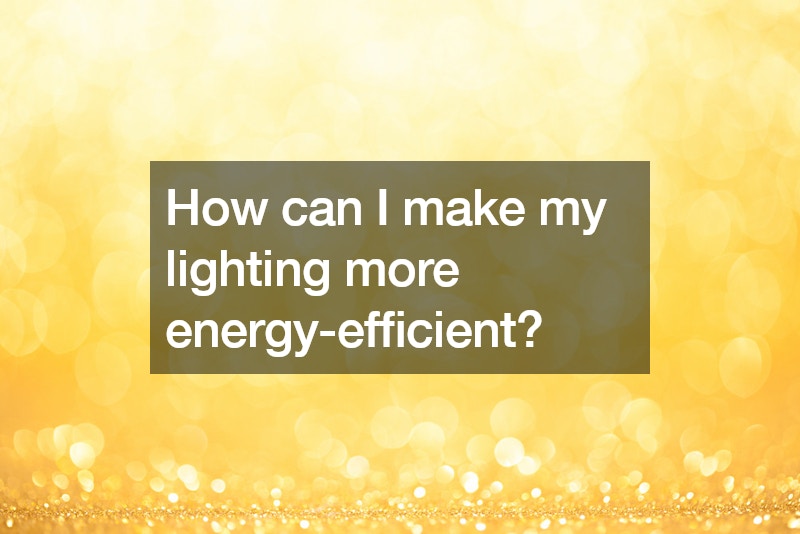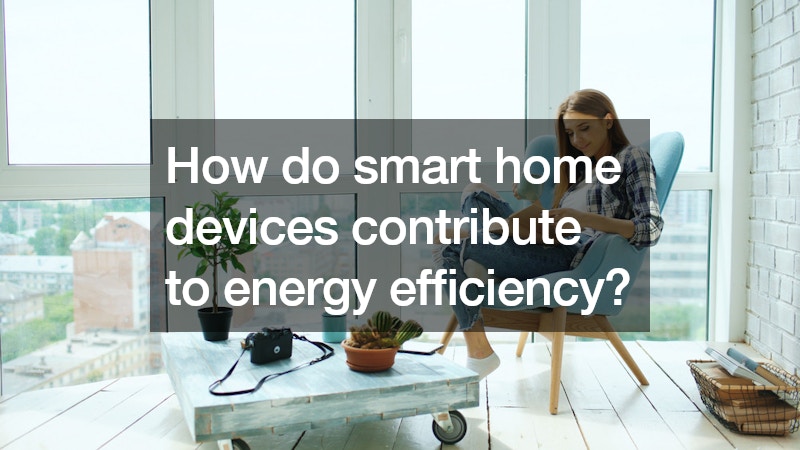Increase Your Home’s Energy Efficiency With These Services
Introduction
The urgency of addressing energy efficiency in homes has grown significantly in recent years. With environmental concerns at the forefront and the rising cost of energy, homeowners are increasingly looking for effective ways to reduce their carbon footprint and save money on utility bills. Enhancing your home’s energy efficiency not only contributes to a sustainable future but also enhances comfort and lowers maintenance costs over time. This guide explores a variety of home repair solutions aimed at boosting energy efficiency, offering practical advice and insights to help homeowners make informed decisions.
1. What are the most effective insulation options?

Insulation is fundamental to maintaining a comfortable indoor environment and reducing energy consumption. Beyond basic insulation in walls and attics, basement waterproofing is crucial to prevent moisture infiltration and enhance overall energy efficiency. Various insulation materials, from traditional fiberglass batts to advanced spray foam and cellulose, offer different benefits in terms of thermal resistance and cost-effectiveness. Proper insulation not only regulates indoor temperatures by minimizing heat loss in winter and heat gain in summer but also contributes to noise reduction and improved air quality indoors.
Choosing between professional installation and DIY projects involves weighing factors such as expertise, time commitment, and budget. While DIY insulation projects can be cost-effective, they require careful attention to detail to ensure proper installation and effectiveness. Professional services, often recommended by window replacement companies, guarantee precise installation according to local building codes and standards. This approach not only maximizes energy savings but also provides peace of mind knowing that your home is efficiently insulated for all seasons.
2. How can I improve my windows for better energy efficiency?
Windows are significant contributors to both heat gain and heat loss in homes, making them a critical focus for improving energy efficiency. Upgrading to double or triple-pane windows with low-emissivity coatings significantly reduces thermal transfer, enhancing insulation and UV protection. Beyond window replacements, effective window treatment options like cellular shades or heavy drapes further improve insulation by trapping air near windows. Proper window sealing using weather stripping and caulking prevents air leaks, ensuring that your heating and cooling systems operate efficiently throughout the year.
Enhanced energy efficiency through window improvements not only lowers utility bills but also enhances indoor comfort by maintaining consistent temperatures and reducing noise infiltration. Investing in energy-efficient windows is a long-term investment that pays off in terms of improved home value and reduced environmental impact.
3. Are energy-efficient doors worth the investment?

Energy-efficient doors offer substantial benefits beyond aesthetics, contributing to improved insulation and overall home comfort. Choosing doors recommended by garage door services ensures high-quality materials and installation, enhancing thermal performance and durability. These doors are often equipped with features such as multiple layers of weather stripping and insulated cores, effectively reducing heat transfer and air infiltration. While initial costs may be higher compared to standard doors, energy-efficient doors provide significant savings in heating and cooling costs over their lifespan.
Understanding the installation costs and potential ROI of energy-efficient doors is crucial for homeowners considering this upgrade. Beyond energy savings, these doors enhance security and noise reduction, creating a more comfortable living environment. Investing in energy-efficient doors not only improves the efficiency of your home’s building envelope but also contributes to sustainable living practices.
4. What role does HVAC maintenance play in energy efficiency?
HVAC systems are integral to maintaining indoor comfort and account for a significant portion of household energy consumption. Regular maintenance, performed by qualified HVAC services professionals, ensures that your heating and cooling systems operate at peak efficiency. Scheduled inspections and tune-ups help identify and address issues such as clogged filters, refrigerant leaks, and worn-out components that can compromise efficiency. Upgrading to energy-efficient HVAC systems, advised by experienced HVAC contractors, further reduces energy consumption and lowers utility bills over time.
DIY maintenance tasks such as filter replacement are essential for ongoing system efficiency and air quality. However, professional maintenance offers comprehensive checks and adjustments that extend the lifespan of your HVAC equipment and improve overall performance. By investing in regular HVAC maintenance, homeowners not only optimize energy efficiency but also reduce the likelihood of costly repairs and premature system replacement.
5. How can I make my lighting more energy-efficient?

Lighting represents a straightforward opportunity to reduce energy consumption and lower electricity bills. Transitioning from traditional incandescent bulbs to energy-efficient LED alternatives significantly reduces energy usage while providing the same level of brightness. LED bulbs also have a longer lifespan, reducing the frequency of replacement and maintenance costs. Integrating smart lighting systems allows for precise control over lighting levels and schedules, optimizing energy usage based on occupancy patterns and natural light availability.
In addition to LED bulbs, smart lighting systems offer advanced features such as dimming capabilities, remote access via mobile apps, and integration with smart home platforms. These systems enable homeowners to create personalized lighting environments that enhance comfort and convenience while minimizing energy waste. Incorporating natural lighting solutions, such as skylights or strategically placed windows, reduces reliance on artificial lighting during daylight hours, further enhancing energy efficiency and promoting a healthier indoor environment.
6. Can plumbing upgrades save energy and water?
Efficient plumbing fixtures play a crucial role in reducing both water consumption and energy usage associated with heating water. Installing low-flow faucets, showerheads, and toilets can significantly decrease water usage without sacrificing performance. Partnering with a reputable plumbing company ensures proper installation of these fixtures, maximizing their water-saving potential and minimizing the risk of leaks. Upgrading to energy-efficient water heaters, such as tankless or solar-powered systems, further enhances efficiency by reducing standby heat loss and optimizing hot water delivery.
Insulating exposed plumbing lines helps maintain water temperature and prevents heat loss, especially in colder climates. This simple yet effective measure reduces energy consumption associated with heating water and improves the overall efficiency of your plumbing system. By adopting these plumbing upgrades, homeowners not only conserve natural resources but also lower utility bills and contribute to environmental sustainability.
7. How do smart home devices contribute to energy efficiency?

Smart home technologies offer innovative solutions to monitor and control energy usage, enhancing both convenience and efficiency. Installing a smart thermostat, recommended by electrical repair services, allows homeowners to create customized heating and cooling schedules based on daily routines and occupancy patterns. These devices learn preferences over time and adjust settings automatically to optimize energy usage and comfort levels. Home energy monitors provide real-time insights into energy consumption, empowering homeowners to identify energy-intensive appliances and behaviors that can be modified to reduce waste.
Automated systems, such as smart appliances and lighting controls, further streamline energy management by automatically adjusting settings based on environmental conditions and user preferences. By integrating smart home devices, homeowners can achieve significant energy savings without sacrificing comfort or convenience. These technologies not only contribute to lower utility bills but also support sustainable living practices by reducing overall energy consumption and environmental impact.
8. Are solar panels a good investment for homes?
Solar panels offer a sustainable energy solution that reduces reliance on traditional electricity sources and lowers utility bills over time. While the initial costs of solar panel installation may seem daunting, long-term savings and potential government incentives make them a worthwhile investment for many homeowners. Consulting with a trusted roofing company specializing in solar installations helps assess your home’s solar potential and navigate the installation process efficiently. Talk to electrician services.
Different types of solar panels, such as monocrystalline and polycrystalline varieties, offer varying efficiencies and aesthetic considerations. Choosing the right solar panel system depends on factors like roof space, budget, and energy goals. In addition to cost savings, solar panels contribute to environmental sustainability by generating clean energy and reducing greenhouse gas emissions associated with traditional electricity generation. With advancements in solar technology and increasing affordability, more homeowners are opting to harness the power of the sun to meet their energy needs effectively.
9. What are the best practices for sealing leaks and drafts?
Identifying and sealing air leaks is essential for maintaining consistent indoor temperatures and maximizing energy efficiency. Common areas prone to leaks include windows, doors, electrical outlets, and plumbing penetrations. Weather stripping and caulking are effective methods for sealing gaps and cracks around windows and doors, preventing air infiltration and heat loss. Insulating attics and crawl spaces helps create a thermal barrier that reduces the workload on heating and cooling systems, leading to lower energy consumption and reduced utility bills.
Regular inspections and maintenance of air sealing measures ensure their long-term effectiveness and help identify new leak sources as homes settle and shift over time. Taking proactive steps to seal leaks not only improves energy efficiency but also enhances indoor comfort by eliminating drafts and temperature fluctuations. By adopting these best practices, homeowners can create a more energy-efficient living environment while reducing their environmental footprint and saving money on energy costs.
10. How does landscaping impact home energy efficiency?
Strategic landscaping plays a significant role in enhancing home energy efficiency by providing natural insulation and shade. Planting trees and shrubs strategically around your home helps block direct sunlight during hot summer months, reducing cooling demands and lowering air conditioning costs. Shade trees positioned near windows and outdoor living areas also improve comfort by reducing solar heat gain indoors. Windbreaks, such as dense shrubs or fences, create a protective barrier against cold winter winds, reducing heating needs and improving overall energy efficiency.
Choosing native plants that thrive in your climate requires less water and maintenance, contributing to water conservation efforts and promoting environmental sustainability. Well-designed landscaping not only enhances curb appeal but also supports biodiversity and creates a more comfortable outdoor living environment. By incorporating energy-efficient landscaping practices, homeowners can achieve significant energy savings, reduce greenhouse gas emissions, and create a more sustainable living environment for themselves and future generations.
Conclusion
Improving your home’s energy efficiency involves adopting a holistic approach that integrates various home repair solutions and technologies. From upgrading insulation and windows to investing in smart home devices and sustainable landscaping practices, each step contributes to reducing your carbon footprint and enhancing long-term cost savings. By implementing the strategies discussed in this guide, homeowners can transform their homes into more energy-efficient and comfortable living spaces. Embracing sustainability not only benefits the environment but also improves quality of life and financial well-being. Start your journey toward a more energy-efficient home today and pave the way for a brighter future.


